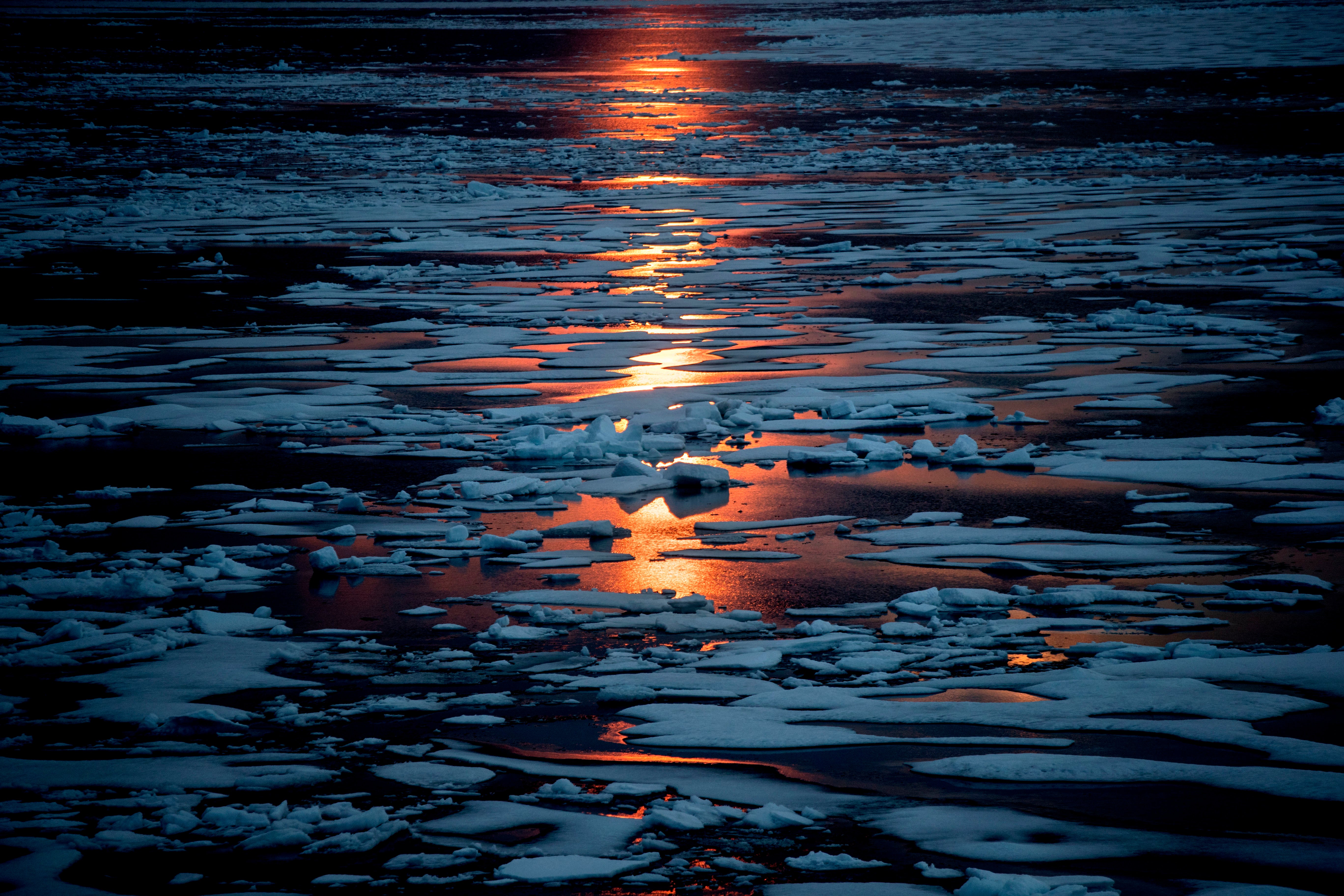Arctic sea ice thins in 2 big jumps, and now more vulnerable
Arctic sea ice is in trouble

Climate change attacked crucial Arctic sea ice thickness in two sudden big gobbles instead of steady nibbling, a new study says.
A little more than 15 years ago, sea ice quickly lost more than half its thickness, becoming weaker, more prone to melting and less likely to recover, according to the study that emphasizes the importance of two big “regime shifts” that changed the complexion of the Arctic.
Those big bites came in 2005 and 2007. Before then, Arctic sea ice was older and misshapen in a way that made it difficult to move out of the region. That helped the polar area act as the globe's air conditioner even in warmer summers. But now the ice is thinner, younger and easier to push out of the Arctic, putting that crucial cooling system at more risk, the study's lead author said.
Before 2007, 19% of the sea ice in the Arctic was at least 13 feet thick (4 meters) — taller than most elephants — but now only about 9.3% of ice is at least that thick. And the age of the ice has dropped by more than a third, from an average of 4.3 years to 2.7 years, according to the study in Wednesday's journal Nature.
It cited “the long-lasting impact of climate change on the Arctic sea ice.”
“Ice is much more vulnerable than before because it's thinner, it can easily melt,” said study lead author Hiroshi Sumata, a sea ice scientist at the Norwegian Polar Institute. Thicker sea ice is crucial to all sorts of life in the Arctic, he said.
The study shows “how the Arctic sea ice environment has undergone a fundamental shift,” said Walt Meier, a scientist at the National Snow and Ice Data Center, who wasn't part of the research. “This paper helps explain why the sea ice has not recovered from those big drops.”
Past studies concentrated more on the extent of Arctic sea ice, or how widespread it is, because that's easily measured by satellites, which don't observe volume well. But 90% of the sea ice eventually is pushed out of the Arctic through the Fram Strait by Greenland, so Sumata overcame the challenges of measuring from space by focusing his observations on that ground-based choke point.
He found that first ice was getting younger, which made it thinner and more uniform, and easier to push out through the Fram Strait. Thicker ice has all sorts of edges and weird shapes that make it harder to force out of the Arctic because of aerodynamics, but that's not the case for sleeker, younger ice, Sumata said.
Scientists had known before that sea ice was shrinking in extent and getting thinner, but this “flushing” is key, said Mark Serreze, director of the National Snow and Ice Data Center, who wasn't part of the study.
“Such flushing episodes have reduced the residence time of ice in the Arctic Ocean by more than a year so there's less time for it to thicken and it's the thick ice that's resistant to melting out,” Serreze said in an email. “But since the Arctic is quickly warming up, we're probably past the point of hoping the Arctic Ocean can recover.”
What likely happened in 2005 and 2007 were periods with warm, large, ice-free open water in the Arctic that exceeded periods of previous summers, Sumata said. White ice reflects the sun's rays, but the dark ocean absorbs it and warms up — something called ice albedo feedback. This cycle of warmer water made it harder for ice to form, survive and get thicker, he said.
Once the ocean has accumulated that heat, it can't go back easily. So in the future more big warmer shifts can happen to make ice thinner and weaker, but don’t count on sudden, healing cooling changes, scientists said.
Sumata and Serreze think those sudden warm jumps will happen soon and are surprised they haven't quite happened yet. Recent projections predict the Arctic ocean will be ice free in parts of summer in 20 to 30 years.
Sea ice thickness and overall Arctic health is crucial even to areas thousands of miles away that don't freeze up, Sumata said.
“It will affect the entire Earth because the north and south pole is something like a radiator of the Earth, the air conditioning system of the Earth,” Sumata said. “And the situation we observed indicates the air conditioner is not working well.”
___
Follow AP’s climate and environment coverage at https://apnews.com/hub/climate-and-environment
___
Follow Seth Borenstein on Twitter at @borenbears
___
Associated Press climate and environmental coverage receives support from several private foundations. See more about AP’s climate initiative here. The AP is solely responsible for all content.
Bookmark popover
Removed from bookmarks